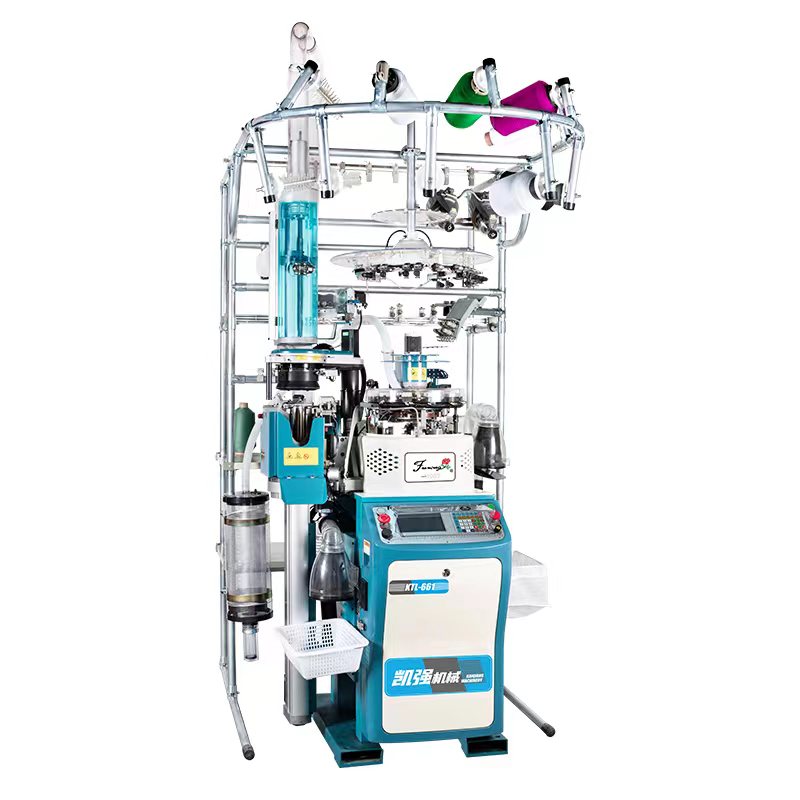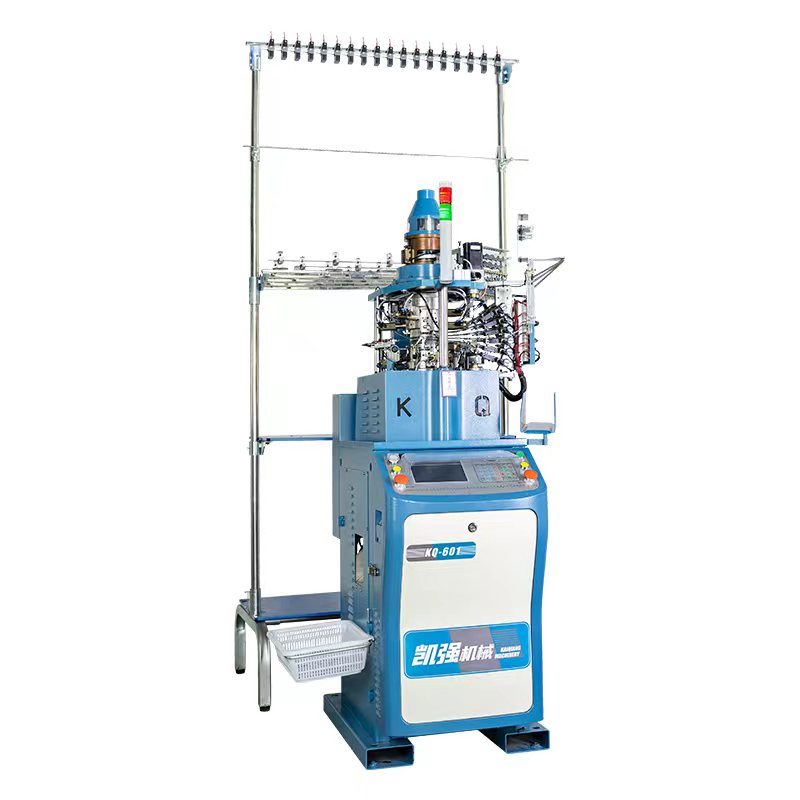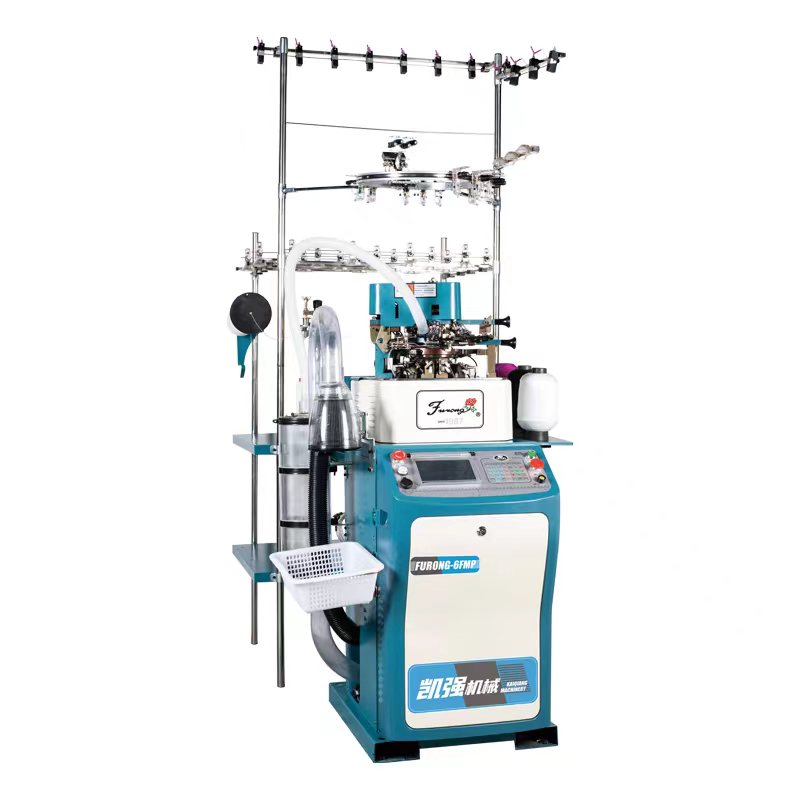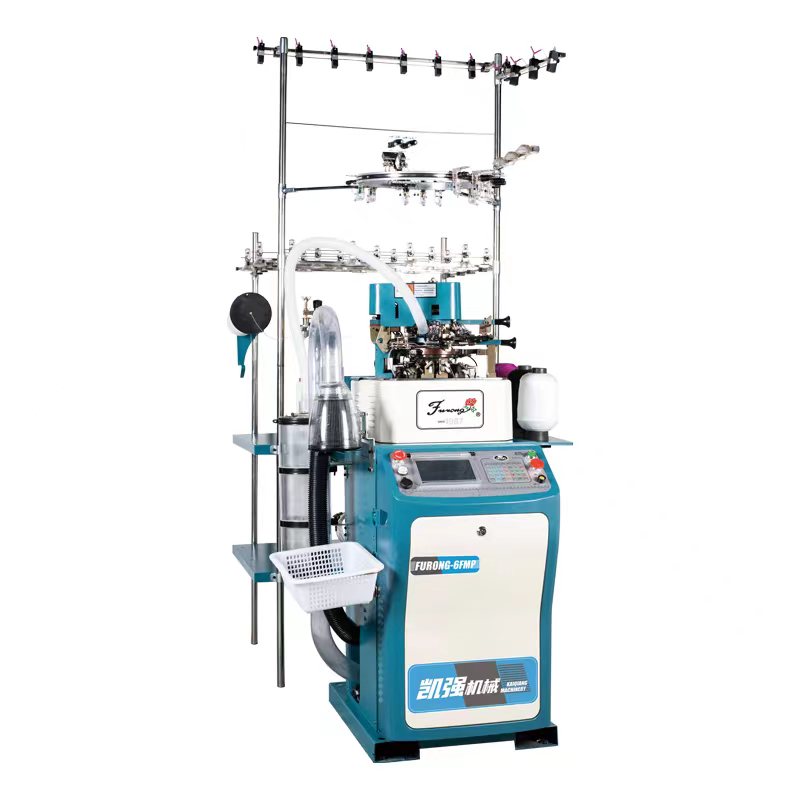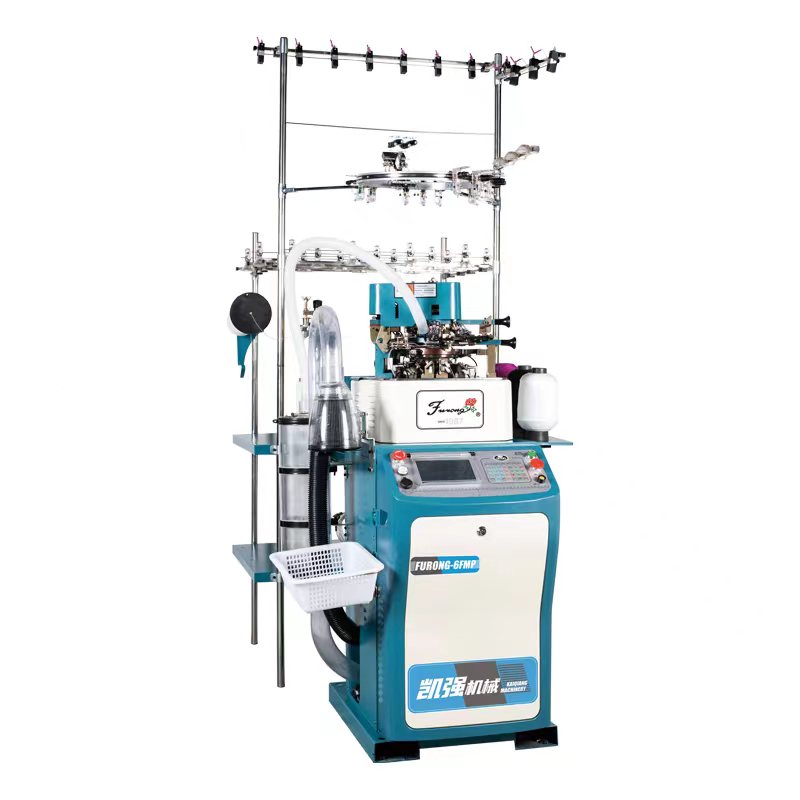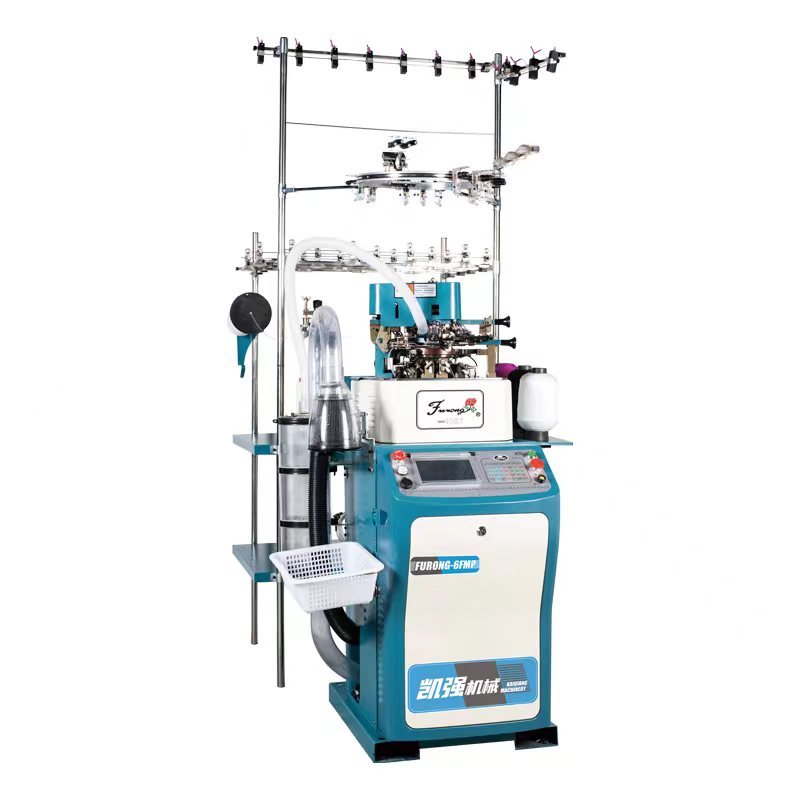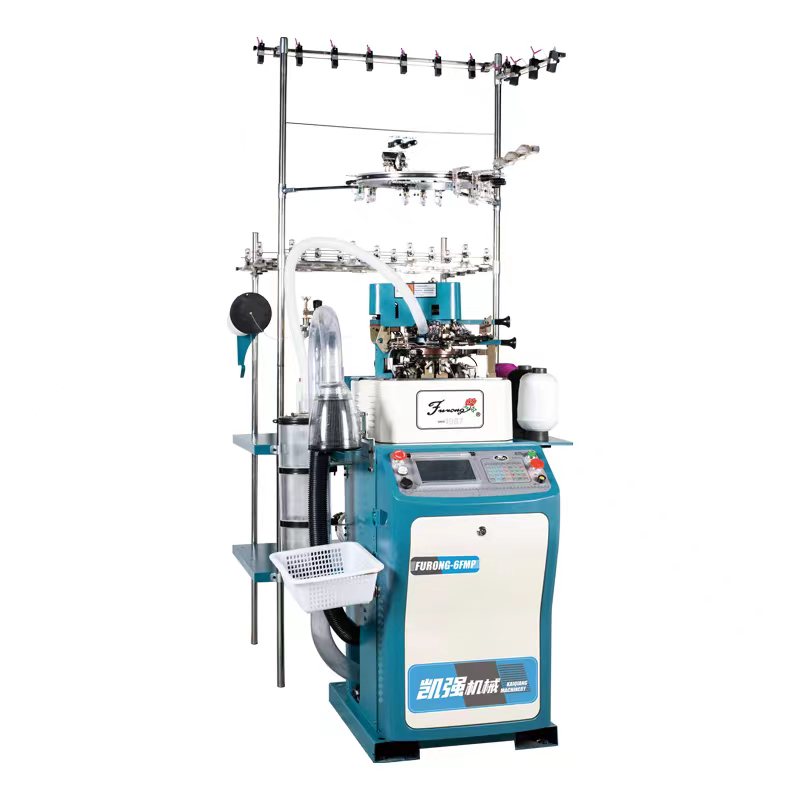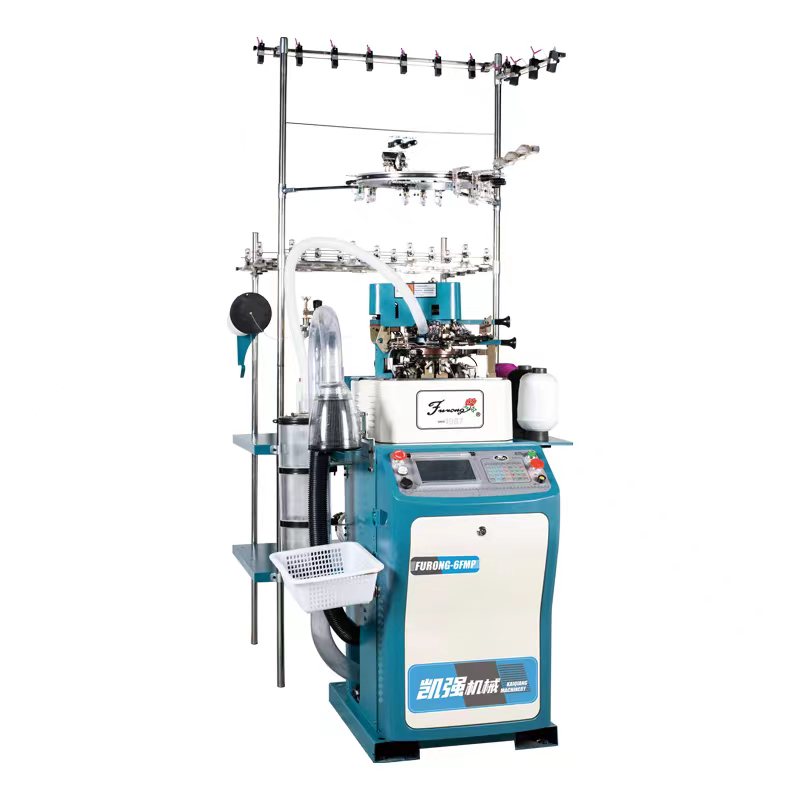Classification of Auto-linking socks knitting machine can be classified according to the needle bed method, the type of knitting needles and the number of needle tubes (beds). The size of the flat hosiery machine is relatively high, and it produces flat hosiery pieces with different widths at various sections according to the shape of the feet and legs, and the non-sewn socks are produced after stitching. The body size range of the round hosiery machine is wide. The production of tubular socks is based on changing the coil size of each section, or using elastic yarn, or knitting the toe and heel of the sock to fit the shape of the foot. The sock toe of the tubular sock blank is closed to form a seamless stitching sock. The productivity of the flat hosiery machine is low, and the round hosiery machine is widely used at this stage. Socks machine structure The circular hosiery machine is mainly composed of yarn feeding mechanism, knitting mechanism, needle selection mechanism, control mechanism, transmission mechanism, relative density adjustment mechanism and stretching mechanism. Some hosiery machines also have opening and folding weaves. The flat hosiery machine also has a ring transfer mechanism.
The function of the yarn feeding organization is to draw the cotton yarn from the thread into the hand-knitting area, and there are two types: passive and active. Depressed yarn feeding is to use the support force to make the yarn be drawn out from the friend. Although there are tensioners and support force compensation equipment to control the support force and the amount of delivery, the yarn support force is still very different. Active yarn feeding uses professional equipment to send cotton yarn into the hand-knitting area at a stable angular speed, and the difference in cotton yarn support is small.
The function of the knitting structure is to weave the yarn into tubular stockings or flat stockings through the work of the loop forming parts. The knitting mechanical parts of the circular hosiery machine include knitting needles, foundation sinkers, yarn guides and cams. The flat hosiery machine has knitting needles, yarn bending pieces, yarn dividing pieces, ring stripping pieces, yarn guides and tablet candy. The knitting needles of the circular hosiery machine are arranged on the needle tube, and the yarn guide is fixed around the needle tube to send the yarn into the knitting area. There are several three-phase five-wires, which are called several lines. Generally, there are 1 to 12 lines. The more the number of lines, the higher the production efficiency. When the needle tube rotates, the latch needle moves up and down under the action of the triangle, and the yarn is laid by the yarn guide for knitting. When knitting the heel and toe of the sock by hand, the knitting needles participating in hand-knitting are narrowed and widened by the needle picker and the needle presser to form a pocket shape. The whole row of knitting needles of the flat hosiery machine is fixed on the side of the needle bed, and moves together with the needle bed. The yarn guide moves along the needle bed to lay the yarn, and at the same time, weaves through the cooperation of the bending piece, the yarn dividing piece and the stripping piece, etc.
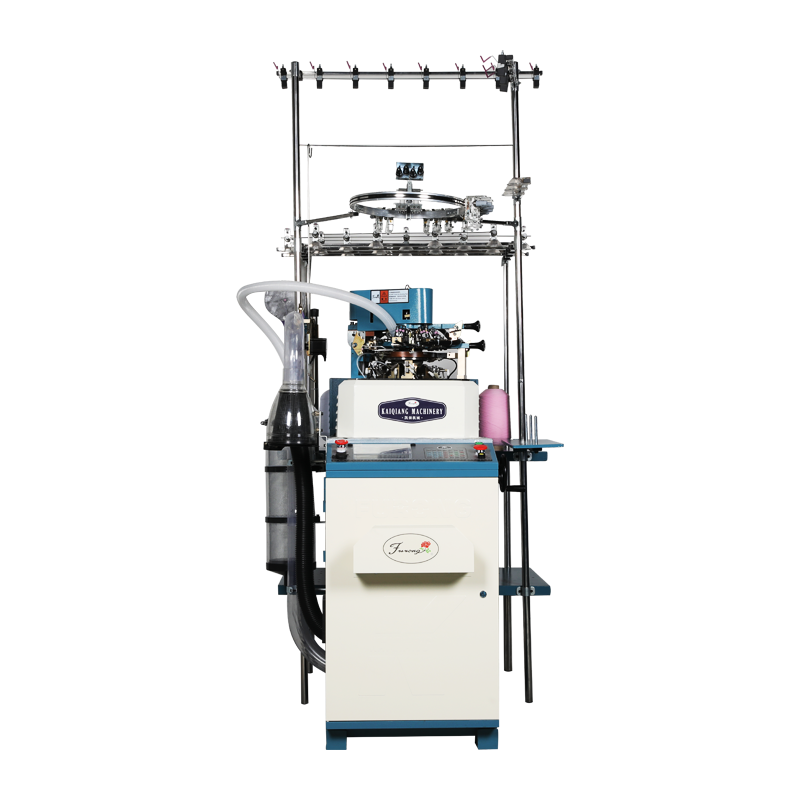

The function of the control mechanism is to control the relevant parts to enter or exit the working process during the process of knitting a sock, and to control the needle tube, speed ratio and rotation, and the length of the sock. The function of the transmission mechanism is to make each tissue move regularly according to a predetermined schedule. The needle tube of the circular hosiery machine not only rotates on one side, but also rotates twice when knitting the sock heel and toe by hand. The function of the needle selection mechanism is to arrange the previously designed patterns in the needle selection device according to the requirements, and make the knitting needles knit according to the program through the transmission parts. The function of the density adjustment mechanism is to adjust the density of each section when knitting socks, which is carried out by changing the relative position of the knitting needle and the sinker to adjust the depth of the yarn bending. The function of the stretching mechanism is to draw the formed coils out of the weaving area by means of hammers, rollers, cyclones, etc. during the weaving process.

 英语
英语 中文简体
中文简体